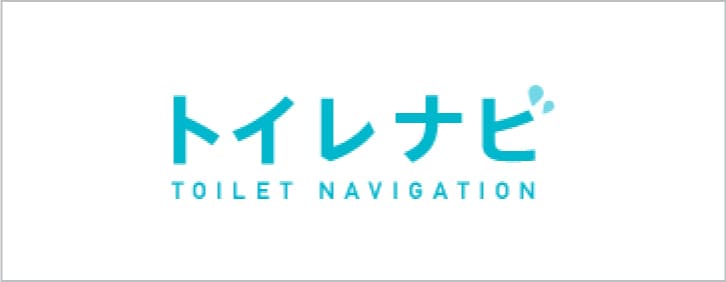Use Of Chatbots In Healthcare: 9 Powerful AI Key Use Cases
Top 10 Chatbots in Healthcare: Insights & Use Cases in 2023
And we don’t need to mention how critical a data breach is, especially in the light of such regulations as HIPAA. Hence, every healthcare services provider needs to think about ways of strengthening their digital environment, including chatbots. By using this information, a medical organization can analyze the efficiency and quality of their services and identify areas for improvement. As well, doctors can gain a better understanding of patients and create a more personalized treatment plan for them, which will ultimately result in better patient care. And finally, all information will be added to a system and will be stored in an organized and centralized manner, thus helping clinics avoid data silos and facilitate admission and tracking of patients’ conditions.
Healthcare chatbots may promote racist misinformation – Healthcare Finance News
Healthcare chatbots may promote racist misinformation.
Posted: Mon, 23 Oct 2023 07:00:00 GMT [source]
However, inquiries about other doctors, even those mentioned prominently in a 2017 news story about overbilling, brought the same response about not having specific information. Regional insights highlight the diverse market dynamics, regulatory landscapes, and growth drivers shaping the Healthcare Chatbots Market across different geographic areas. Understanding regional nuances and market trends is essential for stakeholders to capitalize on emerging opportunities and drive market expansion in the Healthcare Chatbots sector. This allows patients to get quick assessments anytime while reserving clinician capacity for the most urgent cases. 1The MVP is not dead and here is why2The main steps of MVP development3Best practices for creating an MVP4Summing up Say, you have this amazing idea for a software product but you are not too sure about whether it’s going to be a success or not. The automatic prescription refill is another great option as the patient does not have to go to a doctor in person and fill in lengthy forms.
The personalized chatbot encourages patients by addressing the concerns or misunderstanding about the procedure and delivers information in a responsive and conversational way. By using the app, researchers can monitor patient satisfaction, cancellations, no-shows, and successfully completed exams. Read this article to learn everything you need to know about the use of chatbots in healthcare and discover 5 insightful use cases that display their potential. Daunting numbers and razor-thin margins have forced health systems to do more with less.
The main function of mental health chatbots is to provide immediate assistance and guidance in the form of useful tips, guided meditations, and regular well-being checks. In addition, such bots can connect a patient with a medical professional if there is an acute issue. In this way, a patient can rest assured that they will receive guaranteed help and their issue will not be left unattended. They send queries about patient well-being, collect feedback on treatments, and provide post-care instructions.
For example, a chatbot might check on a patient’s recovery progress after surgery, reminding them of wound care practices or follow-up appointments, thereby extending the care continuum beyond the hospital. They ask patients about their symptoms, analyze responses using AI algorithms, and suggest whether immediate medical attention is required or if home care is sufficient. Our tech team has prepared five app ideas for different types of AI chatbots in healthcare. AI chatbots in the healthcare industry are great at automating everyday responsibilities in the healthcare setting. AI-powered chatbots have been one of the year’s top topics, with ChatGPT, Bard, and other conversational agents taking center stage. You can foun additiona information about ai customer service and artificial intelligence and NLP. For healthcare businesses, the adoption of chatbots may become a strategic advantage.
The study showed that most people still prefer talking with doctors than with chatbots. However, when it comes to embarrassing sexual symptoms, participants were much more willing to consult with a chatbot than for other categories of symptoms. The cost to develop healthcare chatbot depends on factors like platform, structure, complexity of the design, features, and advanced technology. There are some well-known chatbots in healthcare like Babylon Health, Ada Health, YourMd, Buoy Health, CancerChatbot, Safedrugbot, Safedrugbot, etc. And chatbots may not have the capacity of completely understanding the emotions of patients. Nevertheless, if you can make it simpler by offering them something handy, relatable, and fun, people will do it.
Overcoming Challenges in Implementing Chatbots in Healthcare
Examples of individuated content include the healthbot asking for the user’s name and addressing them by their name; or the healthbot asking for the user’s health condition and providing information pertinent to their health status. In addition to the content, some apps allowed for customization of the user interface by allowing the user to pick their preferred background color and image. Today’s healthcare chatbots are obviously far more reliable, effective, and interactive. As advancements in AI are ever evolving and ameliorating, chatbots will inevitably perform a range of complex activities and become an indispensable part of many industries, mainly, healthcare. You have probably heard of this platform, for it boasts of catering to almost 13 million users as of 2023.
Healthbots are computer programs that mimic conversation with users using text or spoken language9. The advent of such technology has created a novel way to improve person-centered healthcare. The underlying technology that supports such healthbots may include a set of rule-based algorithms, or employ machine learning techniques such as natural language processing (NLP) to automate some portions of the conversation. UK health authorities have recommended apps, such as Woebot, for those suffering from depression and anxiety (Jesus 2019). Pasquale (2020, p. 46) pondered, ironically, that cheap mental health apps are a godsend for health systems pressed by austerity cuts, such as Britain’s National Health Service.
If you think of a custom chatbot solution, you need one that is easy to use and understand. This can be anything from nearby facilities or pharmacies for prescription refills to their business hours. Healthcare chatbot diagnoses rely on artificial intelligence algorithms that continuously learn from vast amounts of data. By leveraging chatbot technology for survey administration, hospitals and clinics can achieve higher response rates compared to traditional methods like paper-based surveys or phone interviews.
Chatbots Offer Quick Data
More broadly, in a rapidly developing technological field in which there is substantial investment from industry actors, there is a need for better reporting frameworks detailing the technologies and methods used for chatbot development. Finally, there is a need to understand and anticipate the ways in which these technologies might go wrong and ensure that adequate safeguarding frameworks are in place to protect and give voice to the users of these technologies. Notably, people seem more likely to share sensitive information in conversation with chatbots than with another person [20]. Speaking with a chatbot and not a person is perceived in some cases to be a positive experience as chatbots are seen to be less “judgmental” [48]. Human-like interaction with chatbots seems to have a positive contribution to supporting health and well-being [27] and countering the effects of social exclusion through the provision of companionship and support [49].
The transformative power of AI to augment clinicians and improve healthcare access is here – the time to implement chatbots is now. To understand the role and significance of chatbots in healthcare, let’s look at some numbers. According to the report by Zipdo, the global healthcare chatbot market is expected to reach approximately $498.5 million by 2026. In addition, 64% of patients agree to use a chatbot for information on their insurance and 60% of medical professionals would like to use chatbots to save their working time. AI chatbots in healthcare are used for various purposes, including symptom assessment, patient triage, health education, medication management, and supporting telehealth services. As we navigate the evolving landscape of healthcare, the integration of AI-driven chatbots marks a significant leap forward.
Benefits of chatbots or conversational AI in healthcare
Discover what they are in healthcare and their game-changing potential for business. They simulate human activities, helping people search for information and perform actions, which many healthcare organizations find useful. In addition to providing information, chatbots also play a vital role in contact tracing efforts. By collecting relevant information from users who may have been exposed to the virus, these bots assist in identifying potential hotspots and preventing further spread.
Although studies have shown that AI technologies make fewer mistakes than humans in terms of diagnosis and decision-making, they still bear inherent risks for medical errors [104]. Chatbots are unable to efficiently cope with these errors because of the lack of common sense and the inability to properly model real-world knowledge [105]. Another factor that contributes to errors and inaccurate predictions is the large, noisy data sets used to train modern models because large quantities of high-quality, representative data are often unavailable [58].
- They built one of the most highly intuitive AI-powered chatbots in healthcare, which could come up with possible diagnoses for a patient’s symptoms by asking around 20 questions.
- From personalized treatment plans to remote patient monitoring, ChatGPT is transforming the way healthcare providers deliver care to their patients.
- For example, CoachAI and Smart Wireless Interactive Health System used chatbot technology to track patients’ progress, provide insight to physicians, and suggest suitable activities [45,46].
- Inherited factors are present in 5% to 10% of cancers, including breast, colorectal, prostate, and rare tumor syndromes [62].
- Conversely, automation errors have a negative effect on trust—‘more so than do similar errors from human experts’ (p. 25).
The higher the intelligence of a chatbot, the more personal responses one can expect, and therefore, better customer assistance. Conversational chatbots are built to be contextual tools that respond based on the user’s intent. However, there are different levels of maturity to a conversational chatbot – not all of them offer the same depth of conversation. Informative chatbots provide helpful information for users, often in the form of pop-ups, notifications, and breaking stories. After reading this blog, you will hopefully walk away with a solid understanding that chatbots and healthcare are a perfect match for each other.
Let’s check how an AI-driven chatbot in the healthcare industry works by exploring its architecture in more detail. In any case, this AI-powered chatbot is able to analyze symptoms, find potential causes for them, and follow up with the next steps. While the app is overall highly popular, the symptom checker is only a small part of their focus, leaving room for some concern.
As for the doctors, the constant availability of bots means that doctors can better manage their time since the bots will undertake some of their responsibilities and tasks. As you can see, chatbots are on the rise and both patients and doctors recognize their value. Bonus points if chatbots are designed on the base of Artificial Intelligence, as the technology allows bots to hold more complex conversations and provide more personalized services.
If the limitations of chatbots are better understood and mitigated, the fears of adopting this technology in health care may slowly subside. The Discussion section ends by exploring the challenges and questions for health care professionals, patients, and policy makers. AI and ML have advanced at an impressive rate and have revealed the potential of chatbots in health care and clinical settings. AI technology outperforms humans in terms of image recognition, risk stratification, improved processing, and 24/7 assistance with data and analysis. However, there is no machine substitute for higher-level interactions, critical thinking, and ambiguity [93].
In the early days, the problem of these systems was ‘the complexity of mapping out the data in’ the system (Fischer and Lam 2016, p. 23). Today, advanced AI technologies and various kinds of platforms that house big data (e.g. blockchains) are able to map out and compute in real time most complex data structures. In addition, especially in health care, these systems have been based on theoretical and practical models and methods developed in the field. For example, in the field of psychology, so-called ‘script theory’ provided a formal framework for knowledge (Fischer and Lam 2016).
The earliest chatbots were essentially interactive FAQ programs, which relied on a limited set of common questions with pre-written answers. Unable to interpret natural language, these FAQs generally required users to select from simple keywords and phrases to move the conversation use of chatbots in healthcare forward. Such rudimentary, traditional chatbots are unable to process complex questions, nor answer simple questions that haven’t been predicted by developers. Artificial intelligence can also be a powerful tool for developing conversational marketing strategies.
The idea of a digital personal assistant is tempting, but a healthcare chatbot goes a mile beyond that. From patient care to intelligent use of finances, its benefits are wide-ranging and make it a top priority in the Healthcare industry. Through chatbots (and their technical functions), we can have only a very limited view of medical knowledge. The ‘rigid’ and formal systems of chatbots, even with the ML bend, are locked in certain a priori models of calculation.
The primary role of healthcare chatbots is to streamline communication between patients and healthcare providers. They serve as round-the-clock digital assistants, capable of handling a wide array of tasks – from answering common health queries and scheduling appointments to reminding patients about medication and providing tailored health advice. This constant availability not only enhances patient engagement but also significantly reduces the workload on healthcare professionals. By automating responses to repetitive questions and routine administrative tasks, healthcare chatbots free up valuable time for healthcare staff, allowing them to focus more on critical care and patient interaction. Healthcare chatbots, equipped with AI, Neuro-synthetic AI, and natural language processing (NLP), are revolutionizing patient care and administrative efficiency. From setting appointment reminders and facilitating document submission to providing round-the-clock patient support, these digital assistants are enhancing the healthcare experience for both providers and patients.
A new era in healthcare: Embracing AI for enhanced care
The prevalence of cancer is increasing along with the number of survivors of cancer, partly because of improved treatment techniques and early detection [77]. A number of these individuals require support after hospitalization or treatment periods. Maintaining autonomy and living in a self-sustaining way within their home environment is especially important for older populations [79]. Implementation of chatbots may address some of these concerns, such as reducing the burden on the health care system and supporting independent living.
Physical, psychological, and behavioral improvements of underserved or vulnerable populations may even be possible through chatbots, as they are so readily accessible through common messaging platforms. Health promotion use, such as lifestyle coaching, healthy eating, and smoking cessation, has been one of the most common chatbots according to our search. In addition, chatbots could help save a significant amount of health care costs and resources. Newer therapeutic innovations have come with a heavy price tag, and out-of-pocket expenses have placed a significant strain on patients’ financial well-being [23].
Box 2 Characterization of Natural Language Processing (NLP) System Design (Short Title: NLP System Design of the Apps)
Shum et al. (2018, p. 16) defined CPS (conversation-turns per session) as ‘the average number of conversation-turns between the chatbot and the user in a conversational session’. However, these kinds of quantitative methods omitted the complex social, ethical and political issues that chatbots bring with them to health care. In the healthcare field, in addition to the above-mentioned Woebot, there are numerous chatbots, such as Your.MD, HealthTap, Cancer Chatbot, VitaminBot, Babylon Health, Safedrugbot and Ada Health (Palanica et al. 2019). One example of a task-oriented chatbot is a medical chatbot called Omaolo developed by the Finnish Institute for Health and Welfare (THL), which is an online symptom assessment tool (e-questionnaire) (Atique et al. 2020, p. 2464; THL 2020).
While all this sounds impressive, it’s better to go one step further and check out the way bots work in action. With it, you’re able to send up to 7 messages to the Docus chatbot and even request an AI-powered second opinion with DDx, Tx, and more. Richard Brown is a research psychologist investigating differences in health behaviors and how to promote healthier living.
The questions can be pre-built in the dialogue window, so the user only has to choose the needed one. Despite its simplicity, the FAQ bot is helpful as it can speed up the process of getting the patient to the right specialist or at least provide them with basic answers. Medical chatbots might pose concerns about the privacy and security of sensitive patient data. Integration with a hospital’s internal systems is required to run administrative tasks like appointment scheduling or prescription refill request processing.
Based on the understanding of the user input, the bot can recommend appropriate healthcare plans. A well-designed healthcare chatbot can schedule appointments based on the doctor’s availability. Also, chatbots can be designed to interact with CRM systems to help medical staff track visits and follow-up appointments for every individual patient, while keeping the information handy for future reference.
Impetus for the research on the therapeutic use of chatbots in mental health, while still predominantly experimental, predates the COVID-19 pandemic. However, the field of chatbot research is in its infancy, and the evidence for the efficacy of chatbots for prevention and intervention across all domains is at present limited. The timeline for the studies, illustrated in Figure 3, is not surprising given the huge upsurge of interest in chatbots from 2016 onward. Although health services generally have lagged behind other sectors in the uptake and use of chatbots, there has been greater interest in application domains such as mental health since 2016. When customers interact with businesses or navigate through websites, they want quick responses to queries and an agent to interact with in real time. Inarguably, this is one of the critical factors that influence customer satisfaction and a company’s brand image (including healthcare organizations, naturally).
Revolutionizing Healthcare with Chatbots: A Humanized Exploration – Data Science Central
Revolutionizing Healthcare with Chatbots: A Humanized Exploration.
Posted: Mon, 29 Jan 2024 08:00:00 GMT [source]
The second author then screened 50% of the same set of identified studies at random to validate the first author’s selection. Capacity is an AI-powered support automation platform that provides an all-in-one solution for automating support and business processes. It connects your entire tech stack to answer questions, automate repetitive support tasks, and build solutions to any business challenge. Although, if you’re looking for a basic chatbot assisting your website visitors, we advise you to take a look at some existing solutions like Smith.ai, Acobot, or Botsify.
For example, Medical Sieve (IBM Corp) is a chatbot that examines radiological images to aid and communicate with cardiologists and radiologists to identify issues quickly and reliably [24]. Similarly, InnerEye (Microsoft Corp) is a computer-assisted image diagnostic chatbot that recognizes cancers and diseases within the eye but does not directly interact with the user like a chatbot [42]. Even with the rapid advancements of AI in cancer imaging, a major issue is the lack of a gold standard [58]. Watsonx Assistant automates repetitive tasks and uses machine learning to resolve customer support issues quickly and efficiently.
This requires the same kind of plasticity from conversations as that between human beings. The division of task-oriented and social chatbots requires additional elements to show the relation among users, experts (professionals) and chatbots. Most chatbot cases—at least task-oriented chatbots—seem to be user facing, that is, they are like a ‘gateway’ between the patient and the HCP. First, we introduce health chatbots and their historical background and clarify their technical capabilities to support the work of healthcare professionals. Second, we consider how the implementation of chatbots amplifies the project of rationality and automation in professional work as well as changes in decision-making based on epistemic probability.
To help illustrate the distinctions, imagine that a user is curious about tomorrow’s weather. With a traditional chatbot, the user can use the specific phrase “tell me the weather forecast.” The chatbot says it will rain. ”—and the virtual agent not only predicts tomorrow’s rain, but also offers to set an earlier alarm to account for rain delays in the morning commute. If you want to learn more about chatbots, here are some of the most common questions about the topic. Imagine that you want to check your account balance and recent transactions but don’t have time to visit the bank or go through the mobile app.
When a patient interacts with a chatbot, the latter can ask whether the patient is willing to provide personal information. The bot can also collect the information automatically – though in this case, you will need to make sure that your data privacy policy is visible and clear for users. In this way, a chatbot serves as a great source of patients data, thus helping healthcare organizations create more accurate and detailed patient histories and select the most suitable treatment plans. By quickly assessing symptoms and medical history, they can prioritize patient cases and guide them to the appropriate level of care.
This psychiatric counseling chatbot was effective in engaging users and reducing anxiety in young adults after cancer treatment [40]. The limitation to the abovementioned studies was that most participants were young adults, most likely because of the platform on which the chatbots were available. In addition, longer follow-up periods with larger and more diverse sample sizes are needed for future studies. Chatbots used for psychological support hold great potential, as individuals are more comfortable disclosing personal information when no judgments are formed, even if users could still discriminate their responses from that of humans [82,85].








